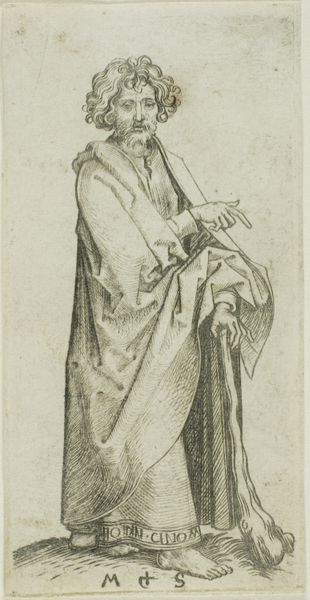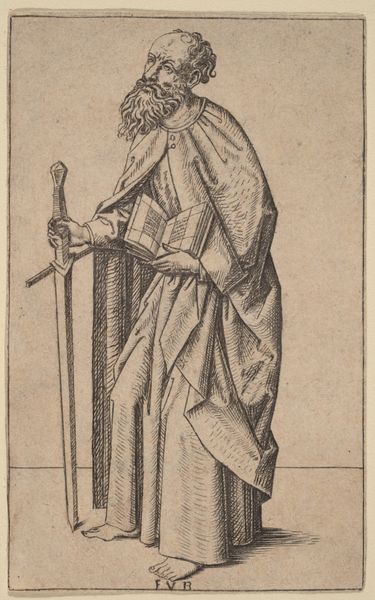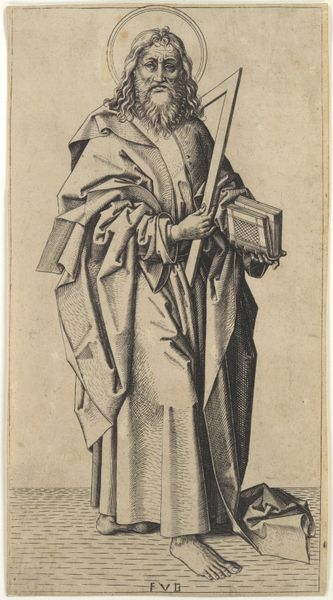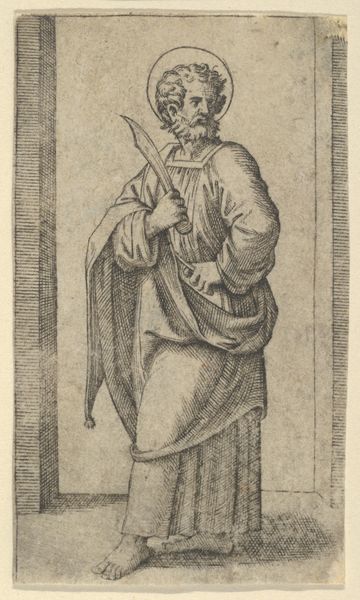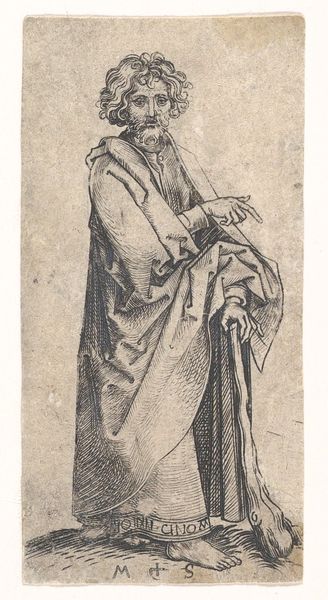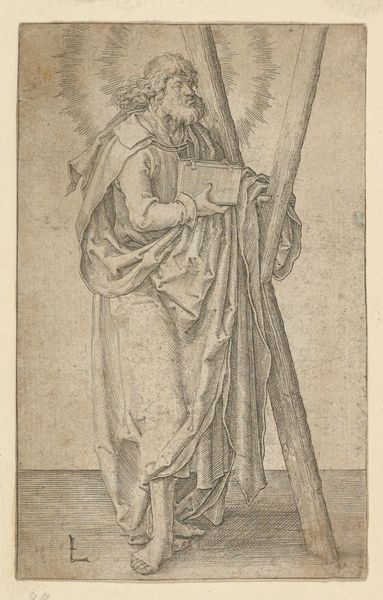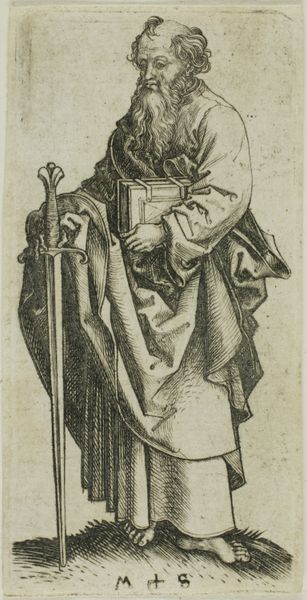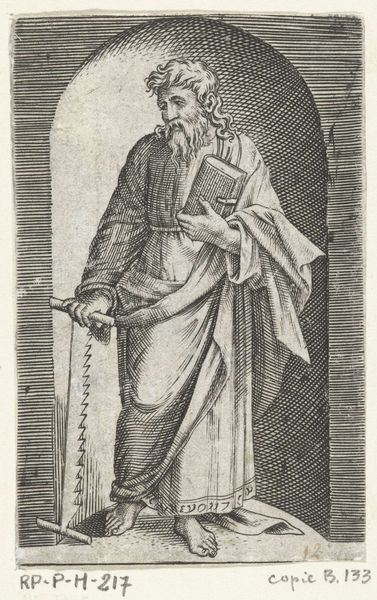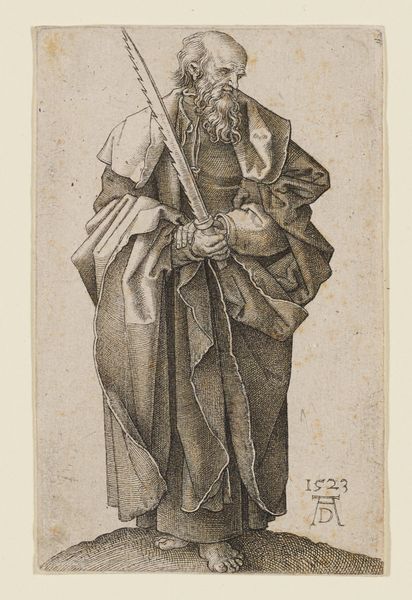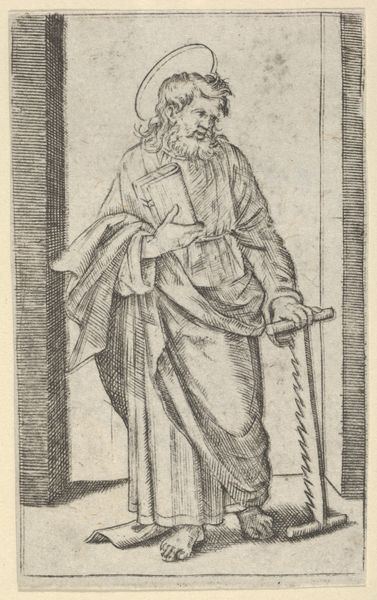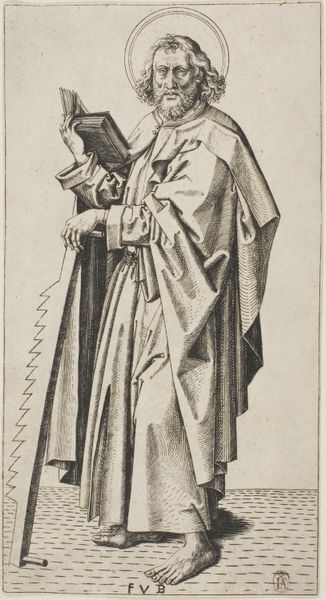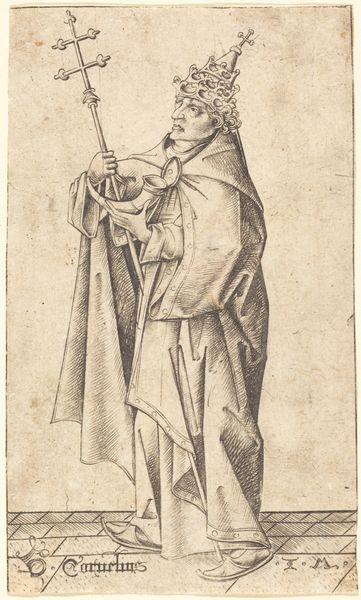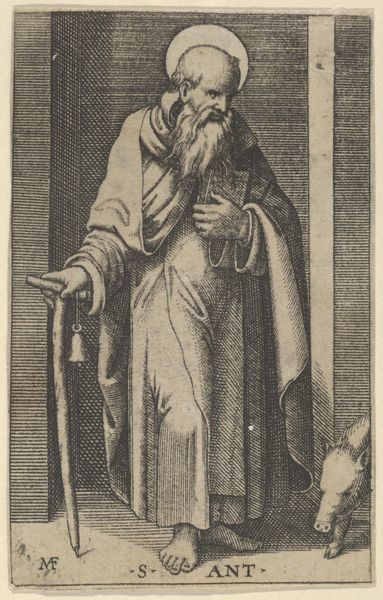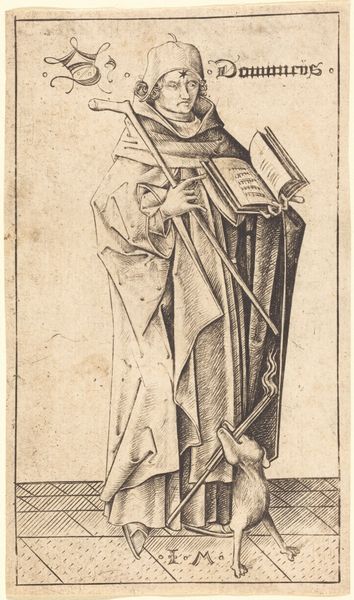
print, engraving
#
portrait
#
medieval
# print
#
figuration
#
line
#
portrait drawing
#
history-painting
#
northern-renaissance
#
engraving
Dimensions: sheet: 18.2 x 9.7 cm (7 3/16 x 3 13/16 in.)
Copyright: National Gallery of Art: CC0 1.0
Curator: Here we have "Saint Paul," an engraving by Master FVB, dating from around 1490 to 1500. Editor: The first thing that strikes me is the duality of his presentation – he carries both the sword, a symbol of his martyrdom, and what appears to be a book, hinting at his profound theological influence. It creates a fascinating tension. Curator: It’s important to recognize the historical weight this image would have carried. Representing Paul in this way would affirm not only faith, but a commitment to knowledge and truth amidst sociopolitical struggles. Editor: The sword itself is fascinating. It's positioned so prominently, almost like a counterpoint to the saint's serene expression. Swords are very popular visual symbols—is there a shared belief that they possess magical powers, cleansing attributes, and spiritual potency? Curator: I see it as more about agency. How Paul seized his narrative, turning from persecutor to preacher. His strength was in shaping doctrine, not just wielding steel. Let's consider how early Christians may have perceived the visual relationship between this representation and the turbulent dynamics that arose between Jewish Christians and Gentile Christians following the writings attributed to Paul. Editor: True, but symbolism rarely works in isolation. I still think that in a way, we all associate weapons like this with defense and safety—it’s not that dissimilar from some forms of abstract expressionism, even, in that it's not all always completely discernible on the surface, but the impact registers in our minds regardless. Curator: So you’re speaking more to a collective cultural consciousness…I think it's definitely there. The question then is what facets of historical collective consciousness may have been present in this era, for both practitioners of Christianity and other faiths. Editor: Exactly. Looking at "Saint Paul," I’m reminded again of how deeply intertwined images and their meanings can become across generations. Curator: Ultimately, art offers the opportunity to engage with history, yes, but moreover it allows us to understand where we are right now. A true image of now through the perspective of then.
Comments
No comments
Be the first to comment and join the conversation on the ultimate creative platform.
